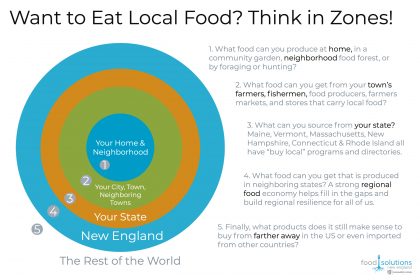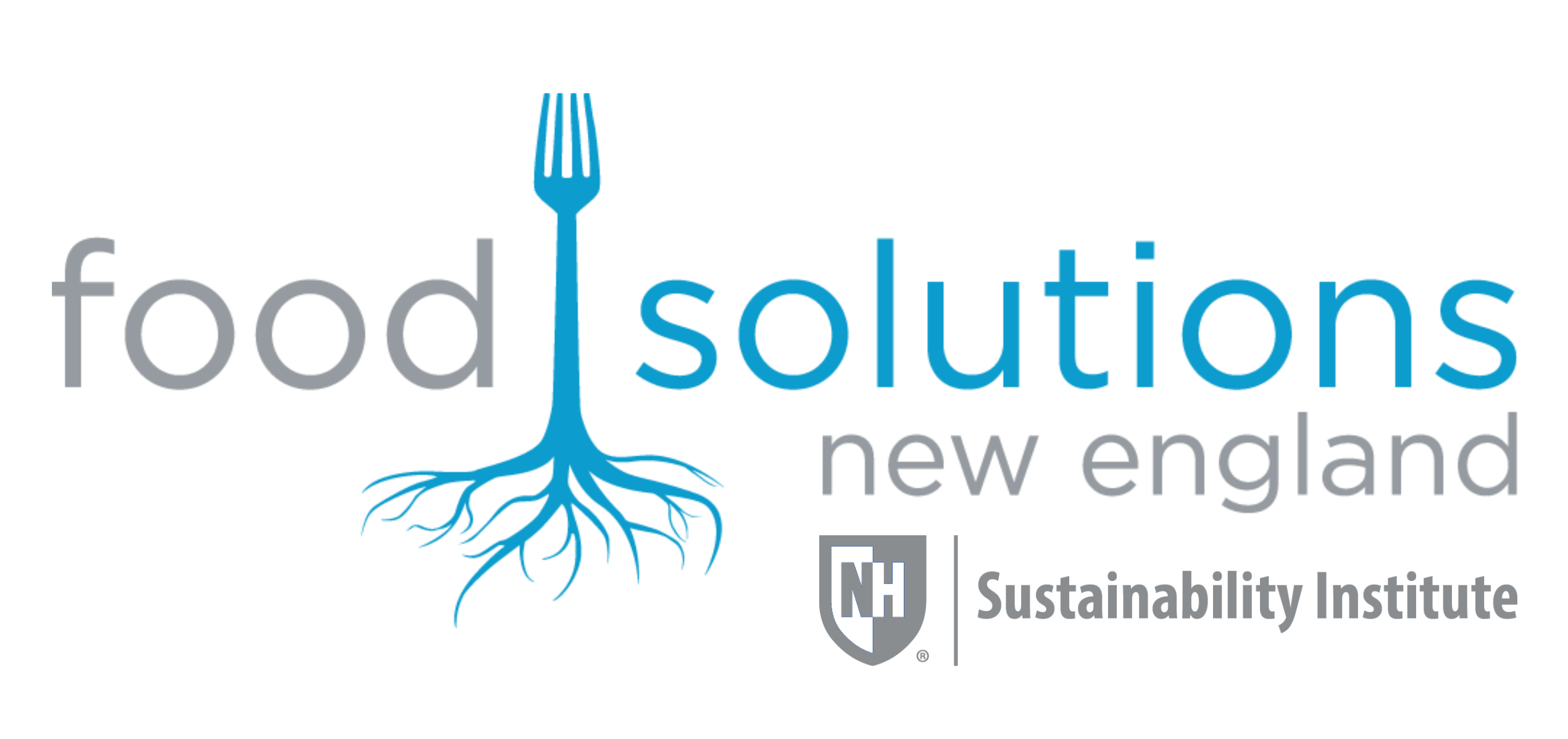
There are many ways to think about “local” but probably the least helpful is to develop a rigid dichotomy of “local vs. non-local.”
Some of our region’s many homesteaders, farmers, and back-to-the-landers might be able to meet the majority of their food needs from their very own homesteads and from connecting with neighbors doing the same. Others might be happy to see the “Get Real. Get Maine” sticker or the “Made in Vermont” label for their respective states and feel like they’re helping to build a thriving local food economy (they’d be right!). Yet again, some folks in our region might feel like they’re only really buying local food if it’s obtained directly from the farmer, fisher, or food producer at a farmers market, farm stand, or via a CSA share. What if you defined “local” as a certain radius of miles from where you lived? In that case, our friends on the western borders of Connecticut, Massachusetts, Vermont will want to include the Hudson River valley, for sure. And let’s not forget that state boundaries are a social and political construct -with real policy implications, of course – imposed on a much older pattern of traditional use by indigenous peoples who had their own established foodways.
For today, we’d like to encourage you not to think of food as simply local vs. not-local, but consider a spectrum of “zones” starting with your own home food production possibilities all the way through “scales of local” until you backfill your needs with those faraway items (and those “Marco Polo Exemptions” like coffee, olive oil, chocolate, etc. that add spice to your life). Credit to the ecological designers in the permaculture movement for inspiring this zonation model of thinking.
Coming up soon, we’ll be talking about overlaying some key values on your local food purchasing decisions and linking to policies that can support values-based purchasing for more people in our region.





